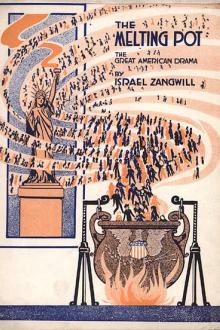No Modernism Without Lesbians, Diana Souhami [love books to read txt] 📗

- Author: Diana Souhami
Book online «No Modernism Without Lesbians, Diana Souhami [love books to read txt] 📗». Author Diana Souhami
Love had lost its freshness, not ‘its dominating faith, its purity, or its wings’. They would have other affairs and impose no restrictions but nonetheless live and die for each other:
il ne sera pas d’union aussi forte que cette union, ni d’association aussi tendre – ni d’attachement aussi durable…
no other union will be as strong as this union, or as tender, or as lasting…
It sounded less specious in French. It seemed like a cover for all real and hypothetical events. I am true to you. I told you I could never be true.
As a symbol of this promise we put a shining, unbreakable green ring, as wide as the universe, around our futures and ourselves… And you shall not be called my wife, or my slave, or my spouse, which are sexual terms for fleeting spans of time, but my one my eternal mate.
They signed the contract. Lily wore the shiny green ring Natalie gave her. It was not as wide as the universe. From then on, they began their letters to each other to ‘my mate éternel’.
Lily then started an affair with the playwright Germaine Lefrancq, who had also had an affair with Natalie. In 1922, Liane de Pougy, who had risen up the social ladder to become Princess Ghika, formed a sexual threesome with Natalie and Lily. ‘We laugh all the time, understand each other, melt into the other, undergo a fusion.’ When Lily met alone with Liane, Natalie was jealous, felt betrayed and told her to choose. Lily stopped seeing Liane, who noted that Natalie and Lily ‘almost never leave each other’.
Was this a blueprint for lesbian marriage? It was not for the faint-hearted. Was it modernist? It did not fit the Judaeo-Christian orthodoxy. It was not what fathers prescribed for their daughters. It questioned the old order, required a thick skin, a good deal of spare time and an unusual capacity for adventure. As a lifestyle, it provoked anxiety, jealousy, insecurity and doubts about self-worth. But it surely allayed or avoided, at least for a while, feelings of boredom, entrapment or any sense of ‘ending up’.
It was Natalie’s rationale for her polyamorous life. She did not want, like Gertrude and Alice, a replica of conventional marriage with a gender twist. She wanted validation for her feelings and behaviour, if only to herself and her lovers. Such validation was not on offer from society. She contrived it for herself.
Romaine Brooks
One tiresome practical complication was that 1 May, the day declared an anniversary for Natalie and Lily de Gramont, the day for plovers’ eggs, Sauternes and remembrance, was also Romaine Brooks’s birthday. Natalie had to juggle her commitment to love and no second place.
Romaine, tall, slim, with dark hair and eyes, had no wish to live on Lesbos or emulate Sappho. Her ambition was to create works of art, not be one. She left an impressive oeuvre of portraits of the lesbians in her and Natalie’s circle. After the Second World War, Natalie took the novelist Truman Capote to visit Romaine’s Paris studio. She and Romaine were then in their seventies; Romaine was living in isolation in the South of France. Her portraits lined the walls. Capote compared the immense studio to ‘a shrine museum’ and called it ‘the all-time ultimate gallery of famous dykes… an international daisy-chain’.
You know how you know when you’re not going to forget something? I wasn’t going to forget this moment, this room, this array of butch-babes.
There were about seventy portraits. On the walls and propped against the walls were self-portraits and portraits of Natalie, Lily, the Princesse de Polignac, Gertrude Stein, Una Troubridge, Renata Borgatti, Radclyffe Hall, Gluck. In contrast to the passivity of the female model for the male artist, the reclining nude, Romaine’s butch babes stood tall, in high hats, with collars, coifs and jackets, monocles and riding whips.
no pleasant memories
Beatrice Romaine Goddard was born in a Rome hotel on 1 May 1874. Her father was an army major, her mother an heiress. Her parents divorced soon after her birth and her father did not figure in her life. Her severely mentally ill brother, St Mar, five years her elder, was the total focus of her mother’s attention:
She never failed to remind me that I was not good-looking like St. Mar, and indeed, my pale face and dark hair could in no way compare with his angelic blondness.
Romaine Brooks © Mondadori Portfolio / Getty Images
Major mental illness shrouded Romaine’s family history. Childhood, she said, was like living on an avalanche: ‘no fixity, no foundation, only unfractional time, carrying with it the sensation of danger more mental than physical.’
As an adult, she spoke of herself to Natalie as a martyred child, her life blighted by her mother’s ‘mad egotism’. In the 1930s she drafted a memoir in which she described the chaos and anxiety her mother caused:
my mother rarely slept during the night and never went to bed. Her meals were served at any hour of the day or night, and sometimes, by her orders, they were not served at all. Those in her immediate circle could but follow her example and accept the dictates of her eccentricities. Fortunately there were times when she was quite lost to the world, and these were our most pleasant moments. She would converse to herself, or rather to invisible friends. She was quite gracious with these phantoms, reserving for this world alone the incessant irritability of her other moods.
Yet, in all this confusion, my mother always impressed everyone with the sense of her immense importance. Perhaps this could be accounted for by her arrogance, unusual culture, and personal elegance. The atmosphere she created was that of a court ruled over by a crazy queen; and before my brother showed definite and incurable signs of madness, she treated me either as one of royal blood – since I was descended from her – or else as a page-in-waiting





Comments (0)